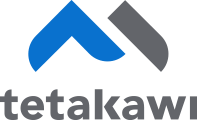There is a growing level of support for a nascent form of manufacturing technology. Additive manufacturing, known at the consumer level as 3-D printing, has become widespread throughout the sector and has a great deal of impact on how things are made. This process is still developing at a breakneck speed, and has yet to see its full potential as a form of making goods. However, many are already claiming that this sort of process can heavily favor manufacturers who wish to expand or even simplify their business operations to a degree. There is much to gain from using the additive process over standard machining that can make manufacturers more agile competitors overall in the global economy.
Adding things up
Additive manufacturing is a multifaceted process, according to 3Dprinting.com. It involves creating a physical object from a 3-D model in a digital format. In this nature, it is quite similar to the process of printing documents on paper, since it requires transferring data from a file into a tangible form. The way it works is adding layers upon layers of materials, referred to as feedstock, in a specific order and manner. The process starts with a 3-D model being made on a computer-assisted design program or through a scan taken of another object through a 3-D scanner. The model is then converted into a file that is readable by the printer. The file cuts up the model in hundreds if not thousands of layers, depending on the intended resolution. The printer reads the layers, and then draws and fills them in one layer at a time.
There are two common printing methods associated with additive manufacturing. One is fused deposition modeling. This melts the feedstock, whether it's plastics, metals or composites, into a nozzle that extrudes the melted material onto a platform, controlled by a mechanism similar to computerized numerical control. The material hardens at room temperature after a short time. The other process, known as selective laser sintering, uses a laser to fuse together powders of specific materials. The fusion of these small particles creates the resulting 3-D object, while the remaining powder serves as a structure to hold the material together while it undergoes sintering. This powder can be reused at a later time.
All about the tools
The creation of a 3-D object from scratch has a multitude of benefits that greatly favor manufacturers in different ways. All of these benefits are focused on the aspect of tooling. In traditional manufacturing processes such as machining, molding and casting, machines have to be adjusted or tooled to create the desired shape or design. Sometimes the intricacies require creating extra parts to maintain the current shape. That adds time, costs money and forces designs to be simple to create so that they are easy to fix in case they break.
In additive manufacturing, tooling is no longer an issue, according to Modern Machine Shop. The printer only needs the digital file to print the good. As a consequence, many of the barriers associated with making certain goods are lowered. The cost-effectiveness is brought down significantly, as there's no need to produce at a mass scale to justify expensive adjustments. Material waste is greatly reduced in the creation process, thus saving factories money and helps them protect the environment. More importantly, though, the process can greatly reduce the number of parts that are needed to complete a given component, making repairs even simpler. To give an example, Airbus's new A350 XWB jet airliner is using 3-D printed metal parts. A titanium fuel tank valve, made of two conjoined pipes, was printed in one part. Usually, the traditional process requires casting and machining 10 parts. Such benefits will be of great use to manufacturers everywhere.
Subscribe
Sign up and stay informed with tips, updates, and best practices for manufacturing in Mexico.





